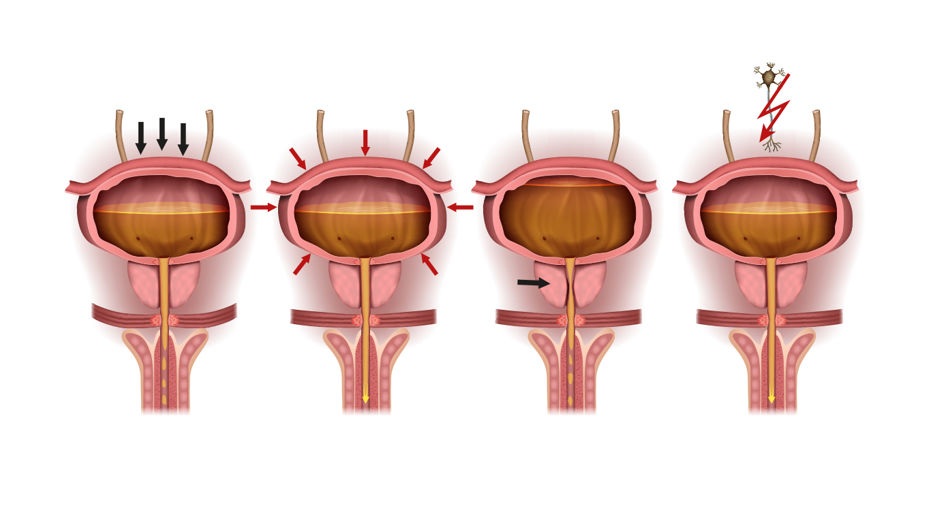
Overflow incontinence is the involuntary loss of urine when the bladder is unable to empty properly due to a bladder outflow obstruction (BOO) or an underactive detrusor muscle (UAB). These symptoms are often described as lower urinary tract symptoms (LUTS).
LUTS is a term used to describe a range of symptoms related to the Lower Urinary Tract (bladder, prostate, and urethra). LUTS are broadly grouped into obstructive symptoms or irritative symptoms.
It is also often used to describe prostatism (a disorder resulting from obstruction of the bladder neck by an enlarged prostate gland) and therefore more commonly used for men who have lower urinary tract symptoms. LUTS can also affect women mainly by chronic constipation, obstruction from a pelvic organ prolapse, or stricture.
LUTS can be divided into groups
Storage (irritative)
In this group, we find bladder problems like increased frequency, urgency, urgency incontinence, and nocturia. Nocturia means increased voiding at night.
Voiding (obstructive)
This group includes symptoms of voiding difficulties such as weak urinary flow, hesitancy, and straining.
Post micturition symptoms (obstructive)
Incomplete emptying / residual urine and dribbling are examples of post-micturition symptoms.
Underactive bladder/bladder failure
This is where the bladder muscle (detrusor) is unable to contract effectively and fully empty this can lead to residual urine remaining inside the bladder.
Symptoms: Weak urinary flow, hesitancy, straining, reduced bladder sensation, abdominal distension with/without discomfort, nocturnal enuresis, recurrent UTIs.
Examination and investigations
Patients with LUTS should have an abdominal palpation examination, a digital rectal examination to assess the prostate, an assessment for post-void residual which could include a palpable or percussible bladder, or alternatively use of a bladder scanner.
A bladder diary is very useful. This involves patients recording the time and volume of each void and the volume, type, and time of fluid intake. This should be completed in at least three days.
Urinalysis or MSU is to be considered if suspicious of urinary tract infection (UTI). Patients may be referred for further investigations such as Uroflowmetry or Urodynamics.